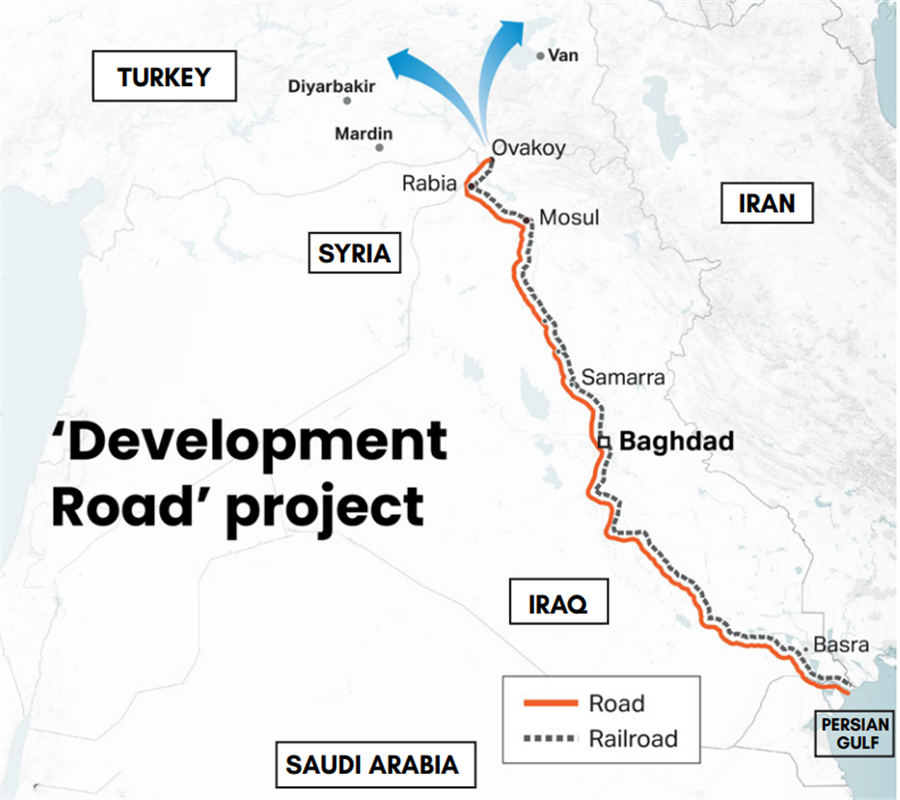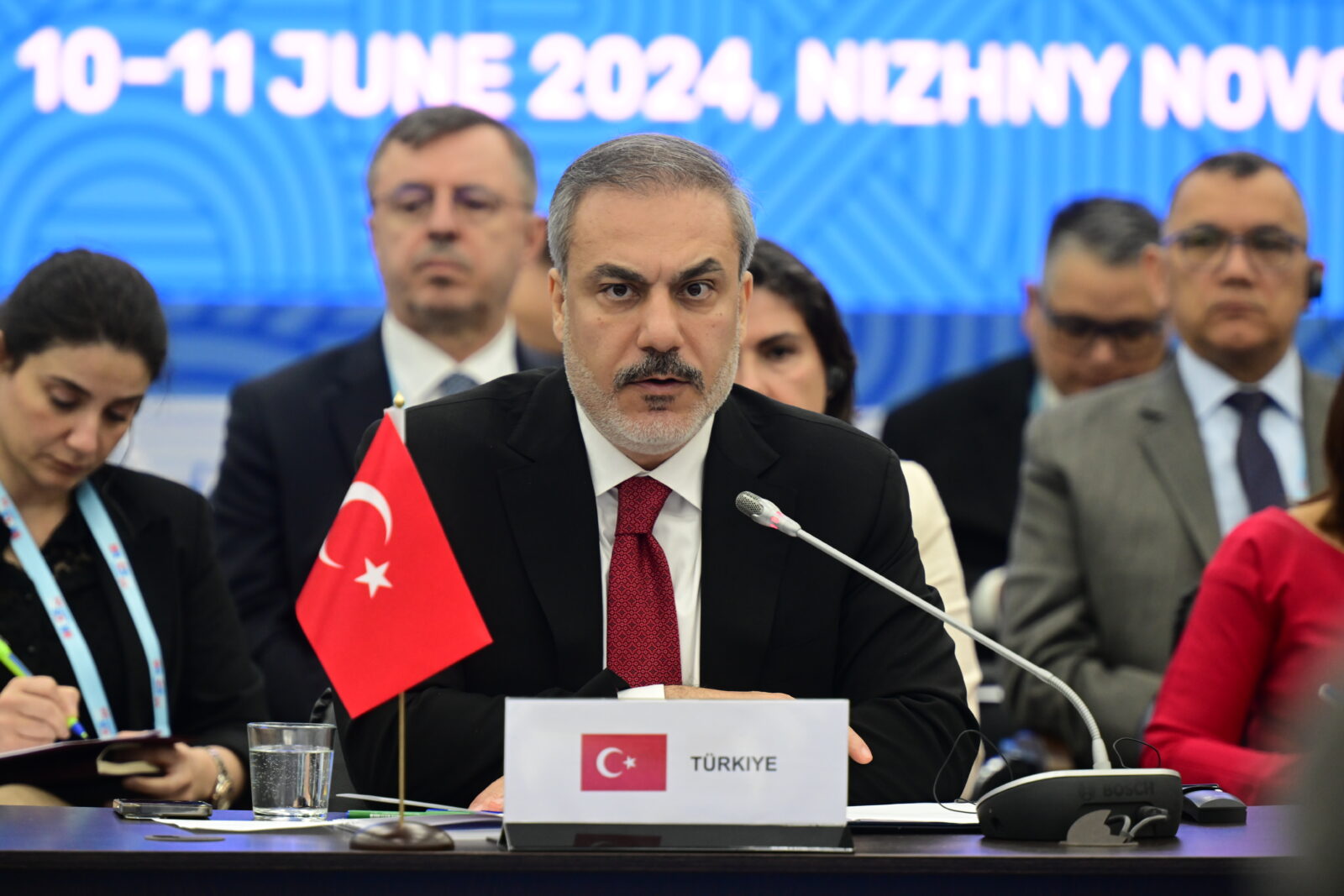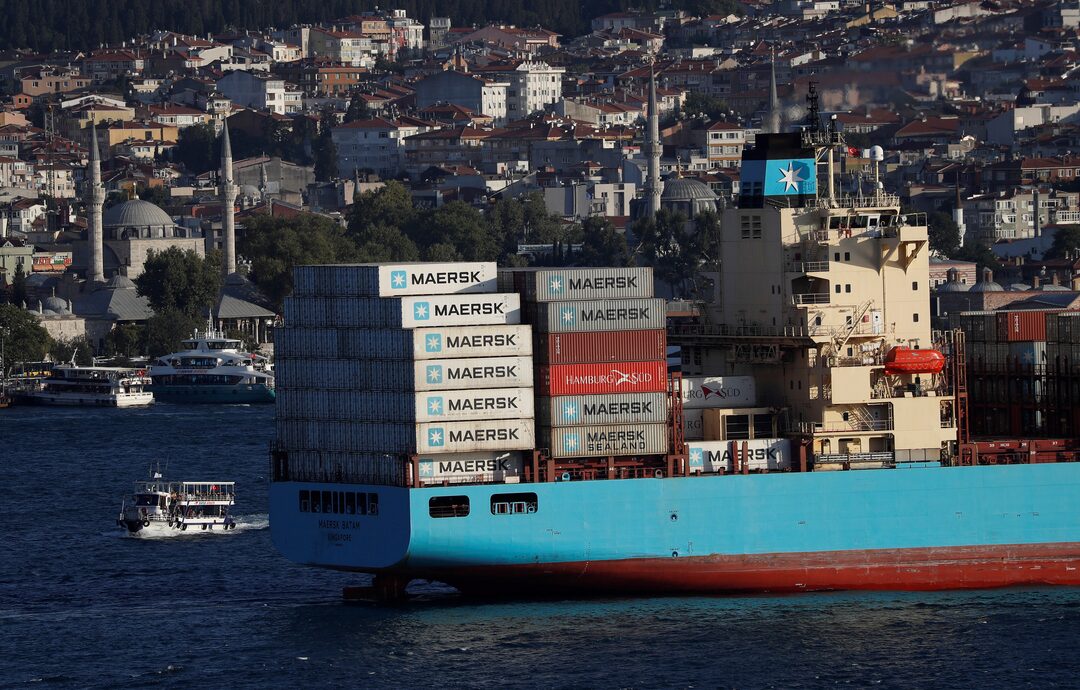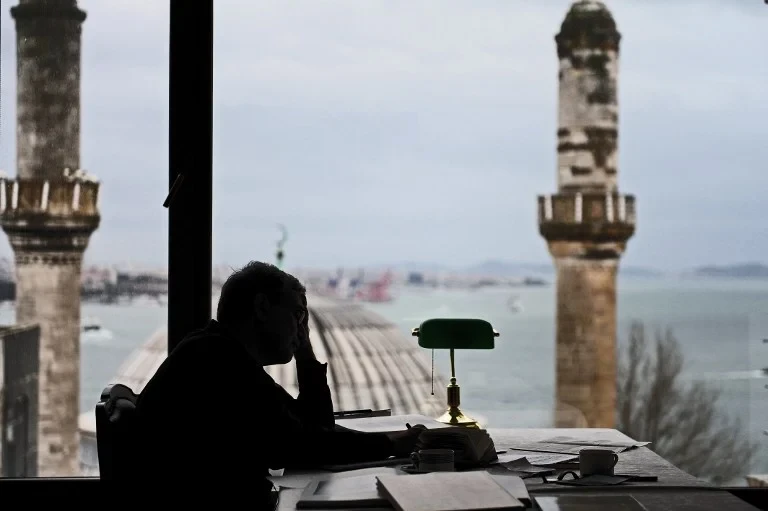Turkish economic relations board questions benefits of China’s Belt and Road Initiative
 Nail Olpak, the President of the Foreign Economic Relations Board (DEIK). (AA Photo)
Nail Olpak, the President of the Foreign Economic Relations Board (DEIK). (AA Photo)
Nail Olpak, chairman of the Foreign Economic Relations Board (DEIK), met with journalists in his hometown of Burdur, Türkiye to discuss critical issues surrounding Türkiye’s export industry, the role of Turkish contractors in global markets, and China’s Belt and Road Initiative (BRI), also sometimes referred to as the New Silk Road.
Impact of China’s Belt and Road Initiative
DEIK President Olpak said that China has invested between $50 billion and $60 billion in the BRI project so far. He added that China is seeking to access the lucrative European market more quickly and efficiently, currently relying on sea routes, with a journey from Shanghai to Amsterdam taking between 40 and 45 days.
| Construction | Investment |
| Power: 152.4 | Power: 71.7 |
| Transport: 137.7 | Transport: 26.0 |
| Property: 43.3 | Property: 18.1 |
| Utilities: 13.5 | Utilities: 15.9 |
| Metals: 10.4 | Metals: 11.3 |
Olpak noted that an experiment conducted two or three years ago via the Middle Corridor, which includes Türkiye, transported goods from Shanghai to Amsterdam in 11 days. The initial goal was to reduce the transit time to between seven and nine days.
A truck departing from Gaziantep, one of our good exporting provinces, reaches Amsterdam in three to four days, but when China’s transit time is reduced to eight days, our logistics advantage, which we call our ‘biggest advantage’, will disappear.
When we praise China’s Belt and Road, we need to know what we are applauding. The trucks coming from there will not go back empty, I need to know how to fill them. We will face a serious loss in Europe, our biggest market.
We must evaluate this project from this perspective. As DEIK, we have two reports on this issue. First, we propose reaching a consensus on our shared viewpoint. We need to clarify our position, as we currently have differing perspectives. If we approach this strategically, we can transform this situation into an opportunity. China has become our largest partner, but we face an unfavorable trade balance of 1 to 10. We must strive to bridge this gap.
Nail Olpak, President of the Foreign Economic Relations Board
| Year | Month | Investor or builder | Sector | Amount | Type |
| 2024 | February | Harbin Electric | Energy | $300M | Construction |
| 2023 | April | Harbin electric | Other | $360M | Construction |
| 2022 | March | China National Chemical Engineering | Chemicals | $160M | Construction |
| 2021 | July | Sinosteel | Metals | $1250M | Construction |
| 2021 | April | Alibaba | Other | $350M | Investment |
| 2021 | November | Harbin Electric | Energy | $110M | Construction |
| 2019 | September | State Power Investment, Aviation Industry Corp. (AVIC) | Energy | $1320M | Investment |
| 2018 | August | Alibaba | Other | $730M | Construction |
| 2017 | November | Power Construction Corp. (PowerChina), State Grid | Energy | $1090M | Construction |
| 2016 | December | ZTE (Zhongxing Telecommunications Equipment) | Technology | $100M | Investment |
| 2016 | May | Bank of China | Finance | $110M | Investment |
| 2016 | January | Dongfang Electric | Energy | $660M | Construction |
| 2015 | September | China Merchants, China Investment Corporation (CIC), China Ocean Shipping (COSCO) | Logistics | $920M | Investment |
| 2015 | May | Sinoma | Real estate | $160M | Construction |
| 2015 | May | Sinoma | Real estate | $100M | Construction |
| 2015 | February | China National Machinery Industry (Sinomach) | Energy | $380M | Investment |
| 2014 | April | Industrial and Commercial Bank of China | Finance | $320M | Investment |
| 2013 | August | China National Machinery Industry (Sinomach) | Energy | $220M | Construction |
| 2013 | May | Harbin Electric | Energy | $2400M | Construction |
| 2013 | February | China General Technology (Genertec) | Energy | $460M | Construction |
| 2013 | January | China National Chemical Engineering | Chemicals | $350M | Investment |
| 2013 | January | China National Chemical Engineering | Chemicals | $810M | Construction |
| 2012 | September | Harbin Electric | Energy | $130M | Investment |
| 2012 | September | China National Chemical Engineering | Energy | $640M | Construction |
| 2012 | July | China Electric Equipment | Energy | $600M | Investment |
| 2012 | June | Chery Auto | Transport | $120M | Investment |
| 2012 | June | Power Construction Corp. (PowerChina) | Energy | $210M | Construction |
| 2010 | April | China National Machinery Industry (Sinomach) | Energy | $360M | Construction |
| 2010 | April | Sinoma | Real estate | $780M | Construction |
| 2009 | January | China National Chemical Engineering | Metals | $440M | Construction |
| 2008 | October | Datong | Energy | $760M | Investment |
| 2008 | June | China National Building Material | Real estate | $110M | Construction |
| 2007 | October | China National Machinery Industry (Sinomach) | Energy | $610M | Construction |
| 2005 | June | China Railway Construction, China General Technology (Genertec) | Transport | $1270M | Construction |
Olpak confirmed that the Middle Corridor of China’s BRI project, which utilizes rail transportation, is now operational. He emphasized that the debate over whether to support or obstruct this initiative has already concluded. However, Olpak expressed concern that Türkiye’s potential benefits from the corridor are limited to the small fees generated by passing trains, stating, “I need to achieve more than that.”
Highlighting the significance of the Development Road Project related to Iraq, Olpak underscored the importance of Türkiye’s active participation in this process. He emphasized that Türkiye should not remain a mere spectator but should actively engage in the project, as its involvement is crucial.

Türkiye’s BRICS membership: ‘I consider it as a political playground’
In response to the question about Türkiye’s BRICS membership, Nail Olpak stated that Türkiye’s relationship with the organization is nt new. Türkiye has previously participated in BRICS meetings as an observer member. Olpak described BRICS as more of a political platform than an economic evaluation, suggesting that it could be seen as a new tool in Türkiye’s relations with Europe, which have recently shown signs of increased activity.
Reminding that “high-level economic dialogue” meetings were held with the EU before, and that these meetings were canceled after the Eastern Mediterranean crisis, Olpak said:
“At the beginning of this year, “high-level trade” meetings were initiated in Istanbul and a month ago in Brussels with a new name. This was actually the beginning of an implicit way of saying ‘we are both standing upright and at the same time let’s warm up little by little’.
They invited our Foreign Minister to an informal meeting of foreign ministers for the first time in a long time. Something positive started to be seen in these frozen relations. I see it as a mutualization of politics where they are. I don’t think this will lead to a rupture. I think Türkiye can maintain a balanced relationship. When I say this, I would like to say that I have not received any signals from anyone.
This is a negotiation, a process of getting something. I am one of those who think that we can take both balances together.
Nail Olpak, President of DEIK
Olpak also reminded that no steps have been taken to update the Customs Union.

Calls for increased support for Turkish exporters
Olpak pointed out that while the Turkish government provides support for exporters, there is room for further improvement. He proposed that the 2% foreign exchange support currently offered to exporters could be increased, suggesting, “The 2% foreign exchange support provided to exporters could be slightly increased without significantly disrupting our budget balance.”
He also addressed the 30% foreign exchange conversion requirement imposed on exporters, noting, “A step could be taken to ease the 30% conversion requirement in exports.” Moreover, Olpak advocated for more flexible credit growth limits for small and medium-sized enterprises (SMEs), stating that “the 2% credit growth limit for SMEs could be relaxed slightly.”

Success of Turkish contractors and financial challenges
Discussing Turkish contractors‘ achievements abroad, Olpak highlighted their global success, particularly in securing a $31.5 billion share in international markets in 2022.
“We are second only to China in terms of the number of projects. Turkish contractors are bold and fast, and to date, we have hardly encountered any issues with contractors working abroad. Our pricing and quality are excellent,” he said. However, he underscored that the biggest challenge remains in financing.



